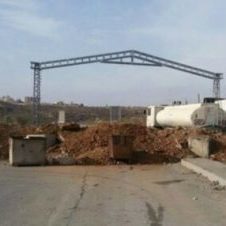- President Donald Trump is proposing a $1 billion arms package for Israel, adding to the $8 billion weapons deal approved by former President Joe Biden in January. However, the package is facing opposition in Congress from Democrats who question whether Israel needs more weapons to combat Iran’s Axis of Resistance.
- Israel seeks additional military aid despite a ceasefire with Hamas, as it continues to confront Iran-backed groups like Hezbollah, the Houthis, and the Islamic Revolutionary Guard Corps’ Quds Force, which are believed to be rearming and planning future attacks.
- While congressional opposition is delaying the deal, President Trump has potential options to bypass Congress and deliver the weapons. Historically, most military aid packages to Israel have passed with bipartisan support.
Full Story
President Donald Trump is trying to send a billion dollars’ worth of bombs and bulldozers to Israel in a new aid deal. The Wall Street Journal was the first outlet to report on the deal, which is in addition to the $8 billion weapons package that former President Joe Biden approved in early January. However, Trump’s proposed package is being held up in Congress by Democrats who are questioning whether Israel needs more weapons in its fight against Iran’s Axis of Resistance.
Details of the proposed military aid
President Trump wants the U.S. to send Israel 4,700 general-purpose, 1,000-pound bombs and several Caterpillar D9 armored bulldozers, which are used to clear debris, remove explosives, and occasionally demolish the homes of Palestinian terrorists.
The latest weapons package would be funded using part of the $3.3 billion in annual military aid that the U.S. already provides to Israel. This aid typically operates like a credit system, allowing the Israeli government to purchase U.S. weapons and munitions.
Why does Israel want more weapons?
Even with a ceasefire in place with Hamas, Israel continues to prepare for broader conflicts. As previously reported, Gaza was just one front in Israel’s war with Iran and its terror proxies, which the Iranian regime refers to as its “Axis of Resistance.”
In addition to Hamas, the Islamic Jihad terror group also operated in Gaza. Hezbollah has maintained a presence in southern Lebanon for years, and while its fighting capability has been significantly weakened over the past year, Israel believes Iran is attempting to rearm and rebuild its most powerful proxy.
Iran also provides financial and military support to the Houthis in Yemen, various Shi’ite militias in Syria and Iraq, and the Islamic Revolutionary Guard Corps’ Quds Force, a specialized branch of the Iranian military responsible for training and directing attacks against Israel.
A shift in Israel’s military response
Before the Oct. 7 terror attacks, Iran-backed groups carried out frequent but largely ineffective attacks against Israel, prompting measured responses from the Israel Defense Forces (IDF).
However, after Oct. 7, Israel vowed “never again” and launched a full-scale, multi-front war against the Axis of Resistance. Now, President Trump appears ready to assist the U.S.’s closest ally in the region in seeing that mission through.
Congressional opposition and possible workarounds
Democrats are currently holding up Trump’s proposed weapons deal, but the president has options to bypass Congress and deliver the bombs and bulldozers through alternative measures. Whether he will take that route remains to be seen. Historically, most aid packages to Israel pass with bipartisan support.




















